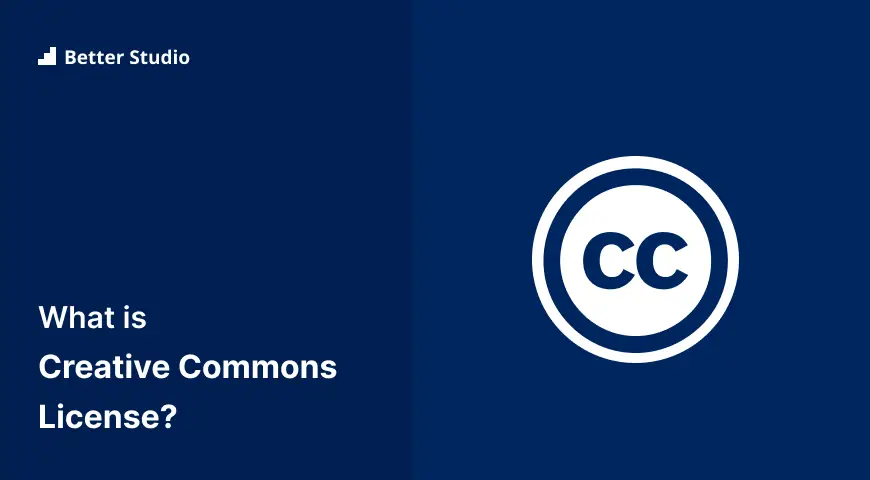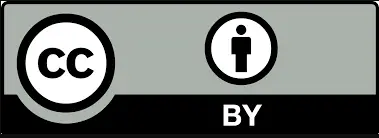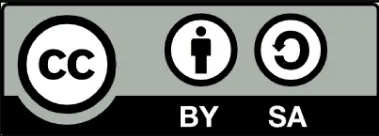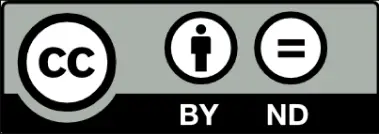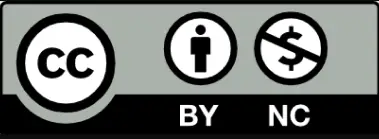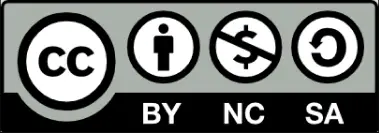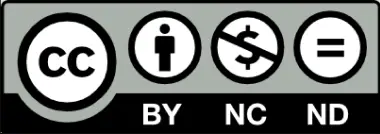Do you worry about the legality of using someone else’s work without permission? Well, fear not, because there is a solution – Creative Commons Licenses.
If you are interested in sharing your work with specific rules, this article is for you. With a Creative Commons license, you can share your content with your own rules and make sure you are getting credited.
Creative Commons Licenses are a set of standardized licenses allowing creators to share their work with others while retaining certain rights. These licenses specify what others can and cannot do with the creator’s work, which makes it easier for people to use and share creative content without worrying about infringing on copyright laws.
In this article, we’ll explore what a Creative Commons license is, why it matters, and how it can benefit you as a WordPress website owner. So whether you’re a blogger, photographer, or musician, read on to learn more about this powerful tool for sharing and collaborating on creative works.
What is a Creative Commons License?
A Creative Commons License is a type of license that allows creators to share their work with others while still retaining certain rights. This license enables creators to specify how their works can be used by others, such as whether or not they can be modified or used for commercial purposes.
It provides an alternative to traditional copyright law and helps to promote collaboration and creativity in the digital age.
The Creative Commons license provides content creators with a standardized way to grant permission for others to use, share and build upon their work.
The most common type of Creative Commons license is the Attribution (CC BY) license. With this license, content can be freely shared and adapted as long as attribution is given to the original creator. This means that anyone can use the content for commercial or non-commercial purposes, modify it, and distribute it, as long as they credit the original author.
Using a Creative Commons license enables content creators to distribute their work widely without worrying about infringing on copyright laws. It also allows other creators to use and build upon existing works, fostering creativity and innovation.
A Creative Commons (CC) License is a type of copyright license that allows creators to share their work with the public while retaining some ownership rights. The CC license provides a framework for creators to specify how their work can be used, shared, and adapted by others.
One of the essential components of a CC license is the attribution requirement. This means that anyone who uses the licensed material must give credit to the original creator in the way specified by the license.
The Creative Commons Attribution license (CC-BY) is the most permissive of all CC licenses, allowing users to distribute, remix, adapt, and build upon the original work, even for commercial purposes, as long as they attribute the work to the creator.
Using a CC-BY license can benefit creators who want to make their work accessible to a broader audience while still protecting their ownership rights. By allowing others to use their work under certain conditions, creators can benefit from increased exposure, collaboration opportunities, and potential revenue streams.
By requiring attribution, CC licenses promote transparency and recognition of the original creator, while also allowing for greater collaboration and innovation.
It’s worth mentioning that even with using the creative commons license, there will be some people that use your content without crediting you or honoring the license requirements.
If you are worried that your content license might not be honored and you want an extra layer of protection, you can use a protection plugin like WPShield Content Protector.
You can use options like disabling right-click menu, disabling source code, securing audio and video, and much more to ensure your content is safe from the wrong hand.
Elements of Creative Commons Licenses
A Creative Commons license is made up of four elements so creators can define their own restrictions on how their work can be used.
The Creative Commons license consists of at least one of these four elements: Attribution (BY), Share Alike (SA), NonCommercial (NC), and No Derivatives (ND).
1. Attribution (BY)
You have to credit the author if you use the work under the Creative Commons license. This is required on all types of licenses.
Important Note: CC0 license does not require (BY) since based on the Creative Commons faq it’s not a license.
The Share Alike license says that if you adapt work or create an adaption with this license, the adaptation must use the same license or one that’s compatible. If you want to know more about compatible licenses, read Create Commons document.
3. NonCommercial (NC):
A noncommercial license means you can’t use the work for commercial purposes. Noncommercial means “not primarily intended or directed toward commercial gain or monetary compensation.”
Here it’s the use of the work, not the user: the user is not the issue, it’s whether the work is being used for a commercial purpose.
- Using the work for a tuition-based educational course might still qualify as non-commercial use.
- A for-profit company can use a work-licensed CC (BY-NC) for non-commercial purposes without any issue.
There is a bit of a grey area when it comes to the definition of “non-commercial,” since while some uses will obviously be commercial, and others will clearly be non-commercial, some may be in more of a gray area zone.
3. No Derivatives (ND):
In ND, you can’t share any adaptations of the work, although you can use and share it in its original form. Changing colors, blurring, adding another image, or any alteration to the original work count as adaptation and is not allowed.
Here’s a list of examples of what counts as adaptations and what doesn’t:
Syncing a musical work with a moving image counts as an adaptation regardless of what applicable copyright law may otherwise provide.
As opposed to what may appear to be an adaptation under the provisions of applicable copyright laws, a format shift technical (for example, the conversion of a licensed work from a digital format to a physical copy) is not an adaptation.
A spelling correction or punctuation fix isn’t an adaptation.
The act of reproducing and collecting works isn’t an adaptation if they haven’t been altered themselves. For example, in the case of a collection of essays by different authors, it’s not an adaptation, but rather a collection. A lot of open courseware is just a collection of other people’s OERs.
Using an image in a blog post or slide doesn’t count as an adaptation; as long as the image is not altered itself.
Types of Creative Commons Licenses
There’s attribution required in all CC licenses, but the license elements can be combined to restrict or allow certain activities, like commercial use.
Here you get familiar with all six licenses made out of combinations of the four elements:
1. Attribution (CC BY)
Others are free to reuse, adapt, remix, and distribute the work for any purpose, including commercial ones, as long as they provide attribution to the original creator with their work or adaptation.
If you adapt the work and share it, you must give your adaptation the same or a compatible license. It requires attribution to the creator and allows you to reuse, adapt, remix, and distribute the work for a commercial purpose.
3. Attribution – No Derivatives (CC BY-ND)
A CC BY-ND license lets others re-use, distribute, and use the work for any purpose, including commercial use. It doesn’t allow adaptations. You’ll need to credit the creator.
4. Attribution – NonCommercial (CC BY-NC)
A CC BY-NC license lets people reuse, adapt, remix, and redistribute the work for non-commercial purposes. People need to attribute the creator anyway.
In this license, you can reuse, remix, and distribute the work for non-commercial purposes; you can’t use it for commercial purposes. Also, if you share the work, you have to give it the same license or a compatible license. You also have to give credit to the creator.
6. Attribution – NonCommercial – No Derivatives (CC BY-NC-ND)
The CC BY-NC-ND license lets others reuse and distribute the work for non-commercial purposes. Commercial use and adaptation are not allowed. Attribution to the author is required.
What is CC0 License?
CC0 license is a Creative Commons license that allows creators to waive all their copyright and related rights to work in the public domain, allowing others to use, modify, and distribute it without restrictions. This license ensures maximum openness and sharing of creative content.
Aside from Creative Commons licenses, Creative Commons also offers CC0, a way to relinquish all copyright and mark a work as public domain.
The public domain is referred to as all the creative work which does not have exclusive copyrights or intellectual property rights attached to it.
Some countries don’t let creators waive or abandon copyright rights, so CC0 includes a “fallback” license that lets everyone do whatever they want with it.
FAQ
A Creative Commons license is a type of copyright license that allows creators to share their work with the public while still retaining some rights over the use and distribution of that work.
There are six different types of Creative Commons licenses, each with varying levels of restrictions and permissions. These include:
Attribution (CC BY)
Attribution-ShareAlike (CC BY-SA)
Attribution-NoDerivatives (CC BY-ND)
Attribution-NonCommercial (CC BY-NC)
Attribution-NonCommercial-ShareAlike (CC BY-NC-SA)
Attribution-NonCommercial-NoDerivs (CC BY-NC-ND)
Creative Commons licenses allow creators to share their work with a wider audience and promote collaboration and creativity. They also provide legal protection for the creator’s intellectual property rights while allowing others to use and build upon their work.
Conclusion
We discussed what a Creative Commons license is and how it can be used to share content while still maintaining control over its use and distribution. We explored the different types of CC licenses and their respective permissions and restrictions.
Thank you for taking the time to read this article. If you have any questions or concerns, please feel free to leave them in the comments section below. We’re always happy to help!
If you want to learn more about WordPress, blogging, and other related topics, be sure to check out the BetterStudio blog for more tutorials and helpful resources.
Don’t forget to follow BetterStudio on Facebook and Twitter to stay up-to-date with the latest tutorials and news.



